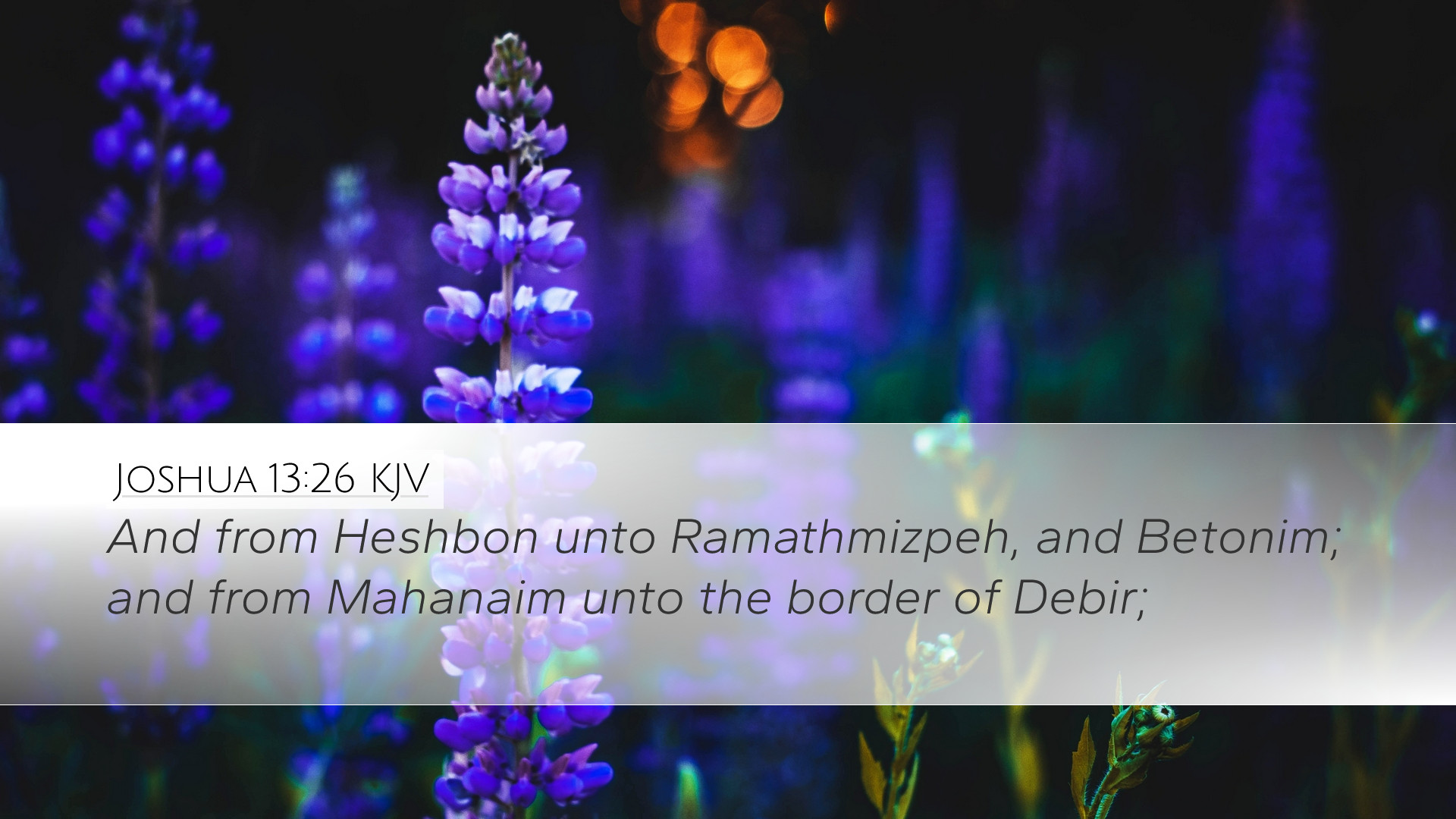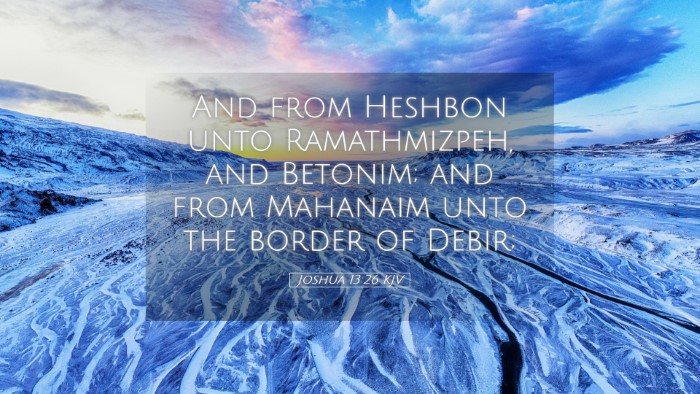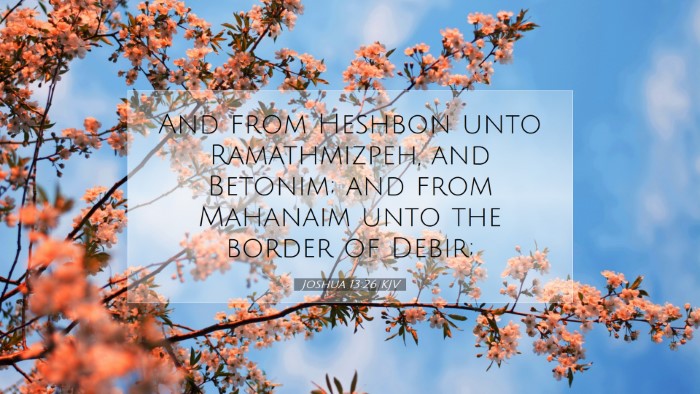Commentary on Joshua 13:26
Joshua 13:26 states, "And half Gilead, and the city of the giants, which is called the cities of the giants, the land of the Geshurites, and the Maacathites, and all mount Hermon, and all Bashan." This verse delineates the territory allocated to the half tribe of Manasseh, particularly emphasizing vital geographical and ethnological components relevant to Israel’s history.
Contextual Overview
The Book of Joshua details the division of the Promised Land among the tribes of Israel following their conquest of Canaan. Joshua 13 introduces the allocation of land to the tribes that possessed it before crossing the Jordan River. This particular verse emphasizes the lands of Gilead and Bashan, known for their richness in resources and strategic significance.
Analysis of Key Components
- Half Gilead: The region of Gilead had historical significance and was noted for its fertile land, suitable for grazing and agriculture. According to Matthew Henry, Gilead was known for its balmy resin (balm of Gilead), a symbol of healing.
- The City of Giants: Also known as the city of Og, this reference conjures a picture both of ancient battles and the fearsome stature of its inhabitants. Adam Clarke notes that Og was a remnant of the Rephaim, a race of giants defeated by the Israelites, showing God’s sovereignty over all adversaries.
- The Geshurites and Maacathites: These two ethnic groups inhabited areas southwest and northeast of the Jordan River, as suggested by Albert Barnes. Their presence in the region reflects the cultural diversity that shaped Israel’s neighboring environments, underscoring that God’s people were to occupy a land amidst various nations.
- Mount Hermon: Significant not only for its size and beauty but also for its enduring symbolism in biblical texts, Hermon is often associated with blessing and divine presence. The heights were deemed sacred spaces, and their mention links this territory to the favorable view of God’s creation and promise.
Theological Significance
This verse encapsulates themes of divine provision and fulfillment of God's promises. The land allocated to the tribe of Manasseh speaks to God's guidance over His people's journey and the eventual realities of their settlement in the Promised Land.
- God as the Sovereign Land Giver: The allocation serves to remind readers of God’s sovereignty. Just as He drove out the giants and opposing peoples, God had a determined will to place His people where they would thrive.
- Lessons on Inheritance: This passage illustrates the importance of inheritance, reflecting how believers view their eternal inheritance in Christ. The physical allocation of land foreshadows the spiritual inheritance believers receive through faith.
- The Intersection of the Secular and Sacred: The mention of specific groups and geographical features positions the sacred activities of the Israelites within the broader historical and cultural framework. This emphasizes that God works through history and amidst diverse peoples.
Practical Applications
For pastors and theologians, this commentary serves to emphasize several contemporary applications drawn from the assigned land of Joshua 13:26:
- God's Faithfulness: Remind congregation members that God remains faithful to His promises, offering them reassurance in their spiritual journeys.
- Cultural Engagement: Understanding the physical and cultural landscapes of biblical narratives can deepen one’s appreciation of Scripture and encourage enriching discussions about faith in today’s diverse society.
- Inheritance and Identity: Explore themes of inheritance in sermons, connecting Israel's claim to their God-given land with the identity believers find in their relationship with God through Christ.
Conclusion
Joshua 13:26 serves as a crucial reminder of God’s providential hand in guiding Israel, demonstrating His fulfillment of promises made from generations past. The verse not only marks the physical inheritance of land but invites deeper reflection on spiritual inheritance, divine sovereignty, and the context in which the people of God interact with the world around them. Through the lens of various public domain commentaries, we find a rich tapestry woven with theological insight and pastoral applications.


